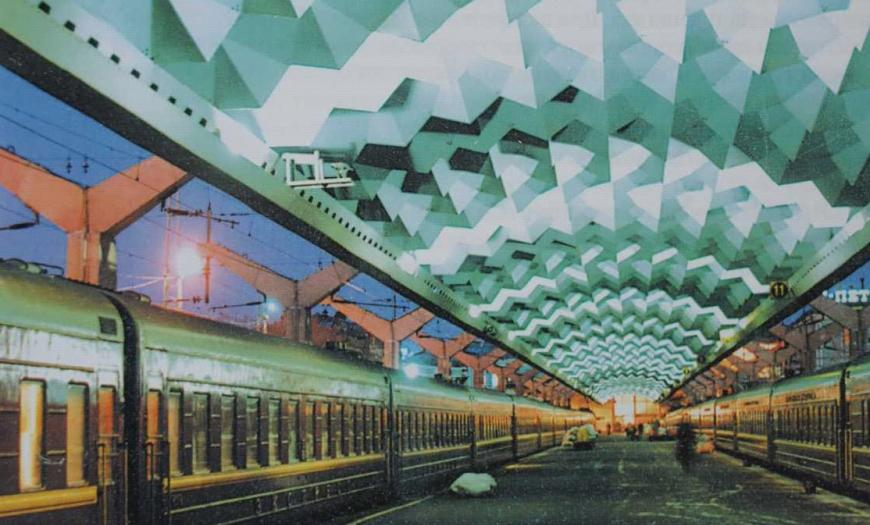Over the years, Lengiprotrans has been involved in the reconstruction of the Moscow railway station — from a large-scale reconstruction in the 1950s to preparations for meeting guests on the 300th anniversary of St. Petersburg. The building was built in the middle of the 19th century on the Nikolaevskaya railway according to a single project with the Leningradsky railway station in Moscow.
In 1975 Lengiprotrans developed a project for overlapping passenger platforms No. 5 and No. 7 with spatial aluminum structures. A condition was set for the designers - no supports on the parade platform No. 5. In this regard, the institute proposed to dismantle the existing platform No. 6, and due to this, expand the inter-paths by placing canopy supports on them.
Floor structures in the form of two-cantilever shells with a span of 21 m were suspended from reinforced concrete supports located between the tracks. Thus, the platforms along the entire length and width became free for the passage of passengers and transport.
The fluorescent lights were located inside the canopies attached to the side elements of the shells, and created a light effect by reflecting off the sloped edges of the floor structure. Alerts are also located in the visors. The wider floor of platform No. 5 is equipped with skylights for additional daylight illumination.
A covered distribution area was provided in front of the platforms - a place where passengers accumulate, protected from atmospheric precipitation. For natural light, the ceiling has 2 large round holes covered with domes and small holes covered with solid plexiglass domes.
Author's department:
Project Status:


